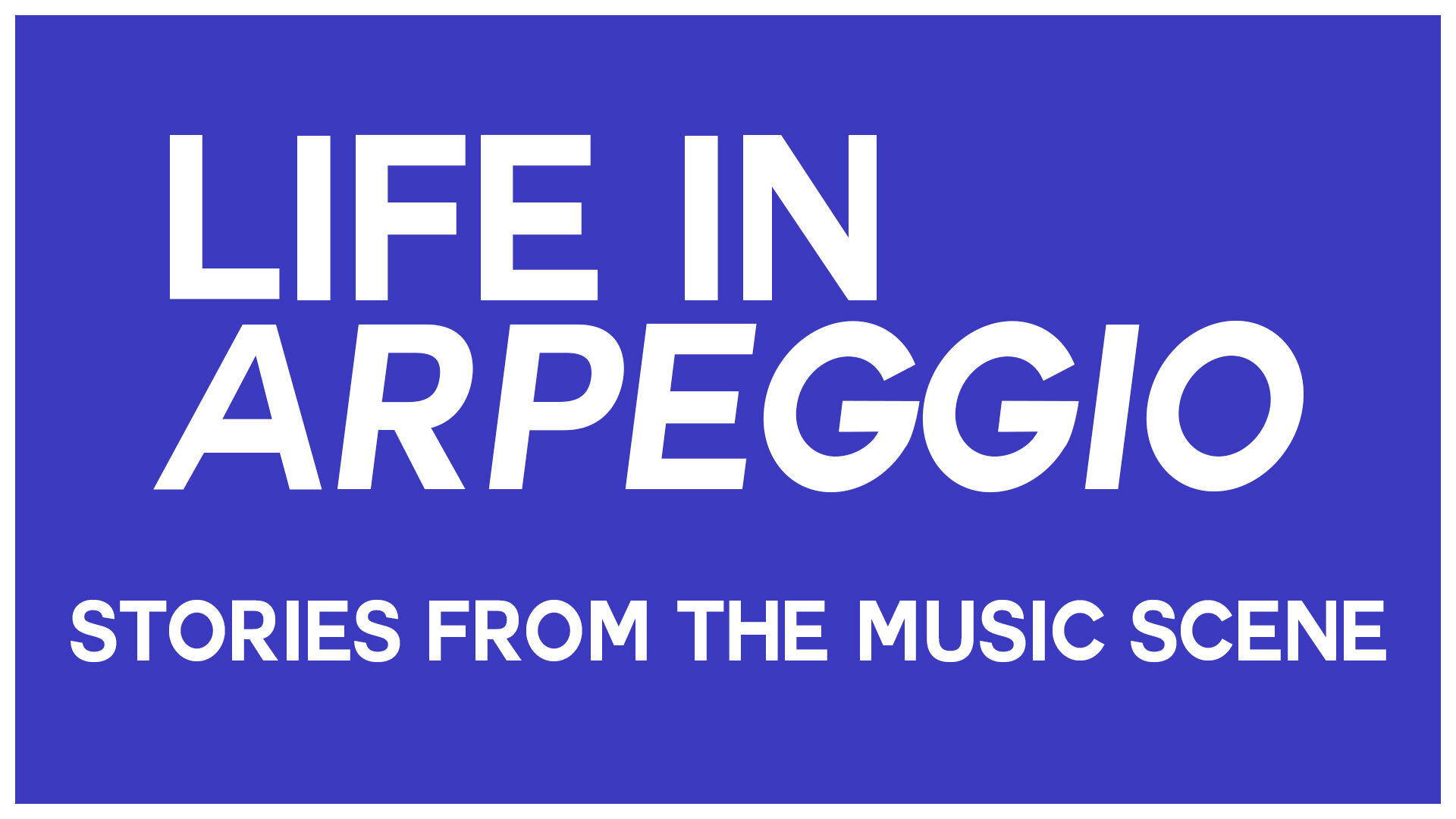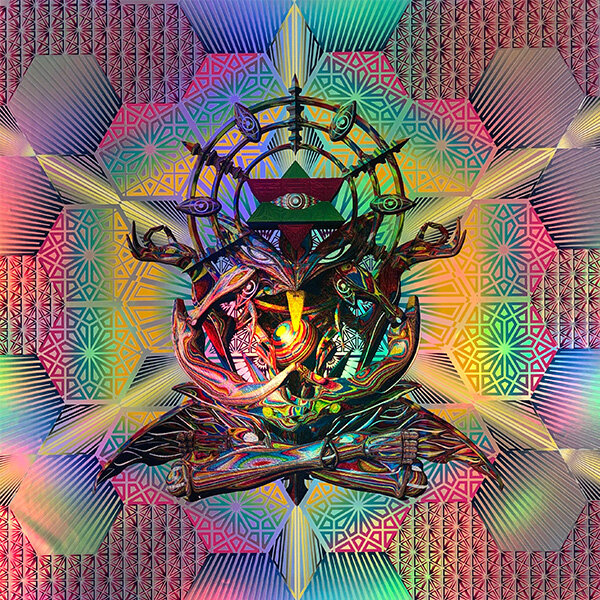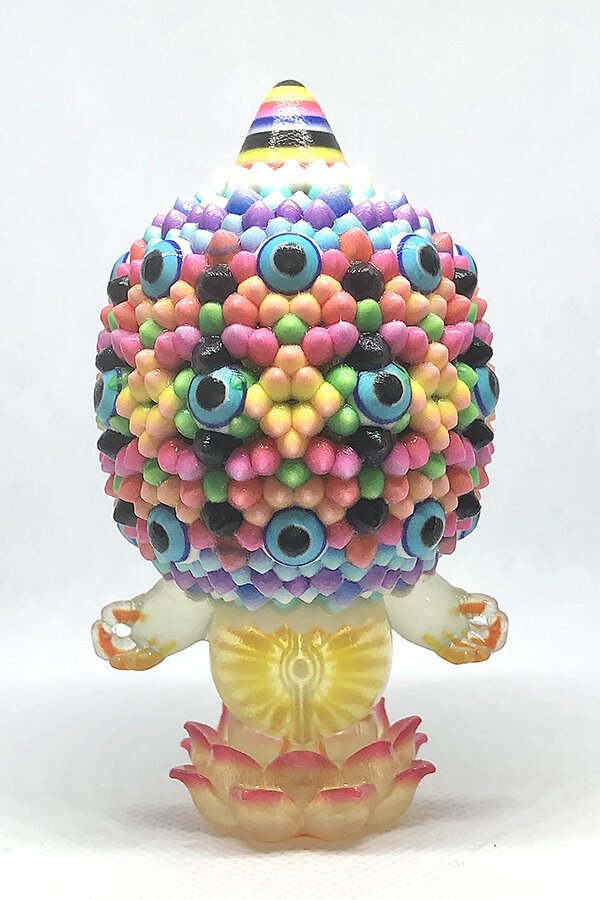Welcome To Metamo Industries, The Odd ‘Psyberpunk’ Unit Fusing Art With Technology
This is the fantastic world of Metamo Industries (Credit: Courtesy of Metamo Industries)
The hues of Singapore melted into a molten kaleidoscope, otherworldly creatures brought to life in 3D, a glowing cosmic deity projected onto a museum, a live DJ showcase on a spaceship, and toon-like animations for a rapper’s showcase on New Year’s Eve. All this is just an inkling of the bizarre imagination that runs through the mother brain of Metamo Industries, a group of progressive creatives turning brand messages into loud works of art. They’ve turned the task of communication into a canvas for their boggling quirks in an aesthetic they call ‘psyberpunk’, surfacing in the mediums of digital art, immersive media, audio production and other untapped frontiers.
The team of Metamo Industries consists of Benedict Teo, Race Krehel, and Taketo Kobayashi (Credit: Courtesy of Metamo Industries)
Run by the Singapore-based collective of Taketo Kobayashi (AKA humanoise), and Race Krehel (AKA SuperCyberTown) and Benedict Teo (FKA Zushan) who both make up the O$P$ outfit known for its introduction of the outlandish ‘Geylang Crunk’ genre, Metamo Industries was formed within the whirlpooling vortex of the pandemic. The struggle businesses faced in reaching consumers during lockdown was unexpectedly offset by the rise of alternative technologies, and it is from this new seed that Metamo Industries began to flourish. Past conquests include the digital edition of Culture Cartel, the virtual demo of Pioneer’s CDJ-3000, and even an interactive AR experience for Singapore Art Week. They crafted possibilities in a climate deemed impossible to succeed in, and as the city begins to awaken, they’re visibly thirsty for new challenges.
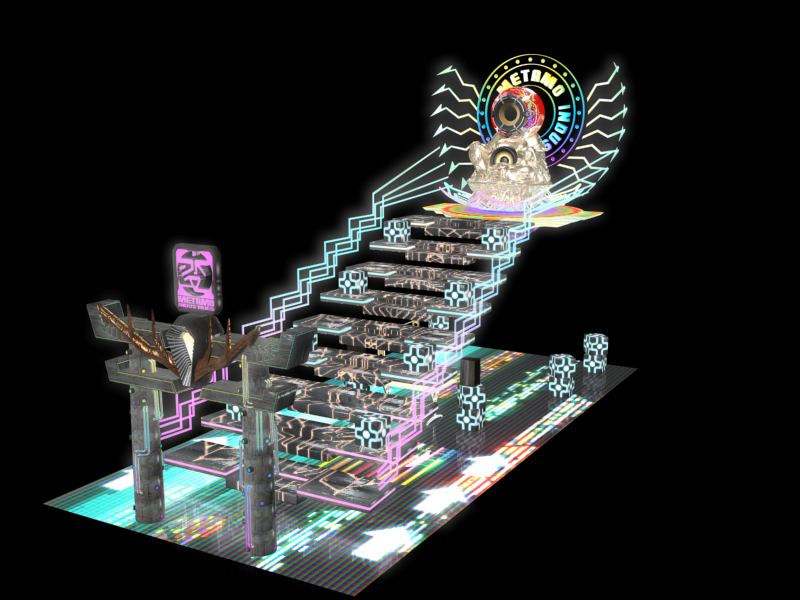
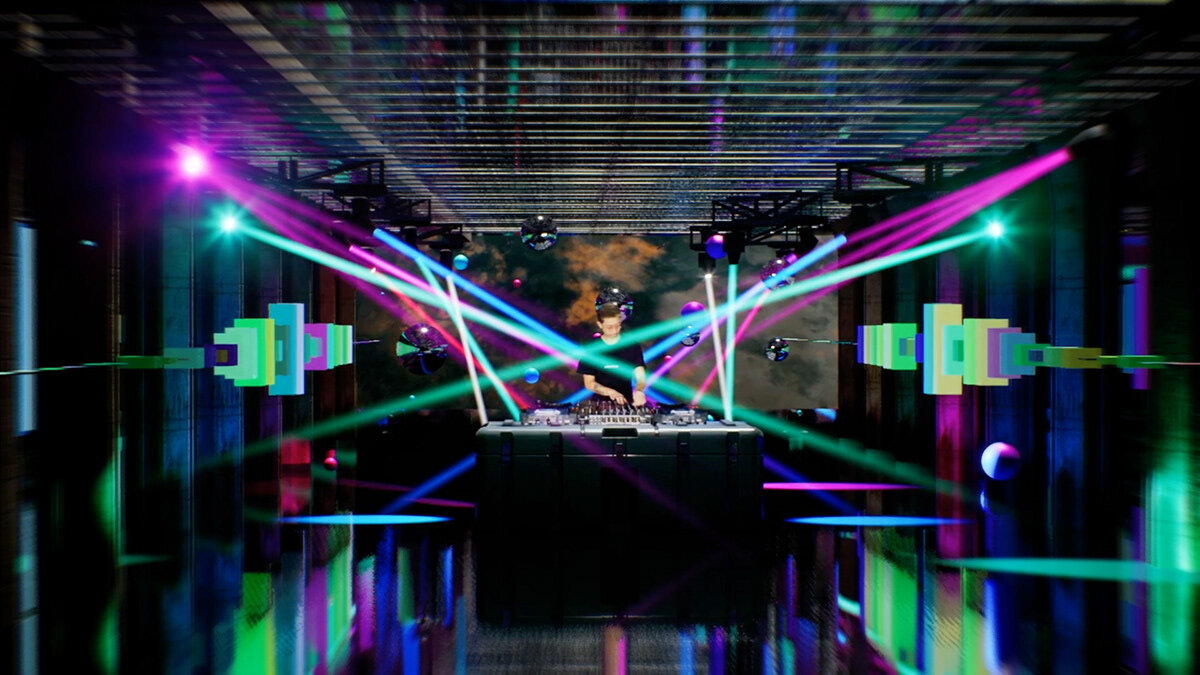
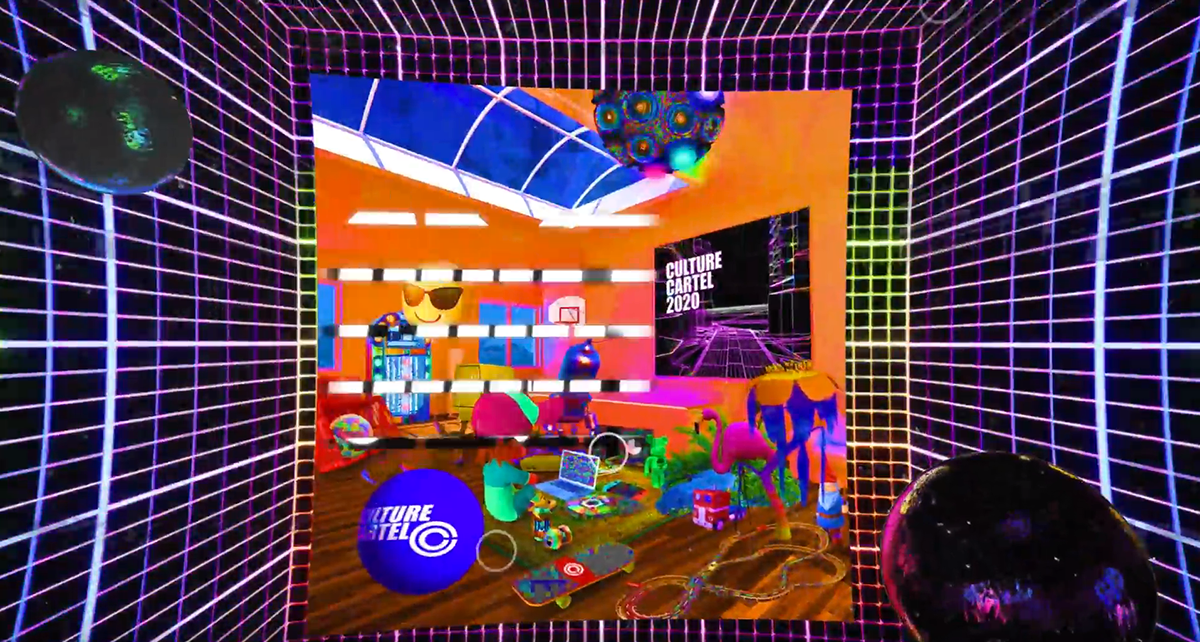
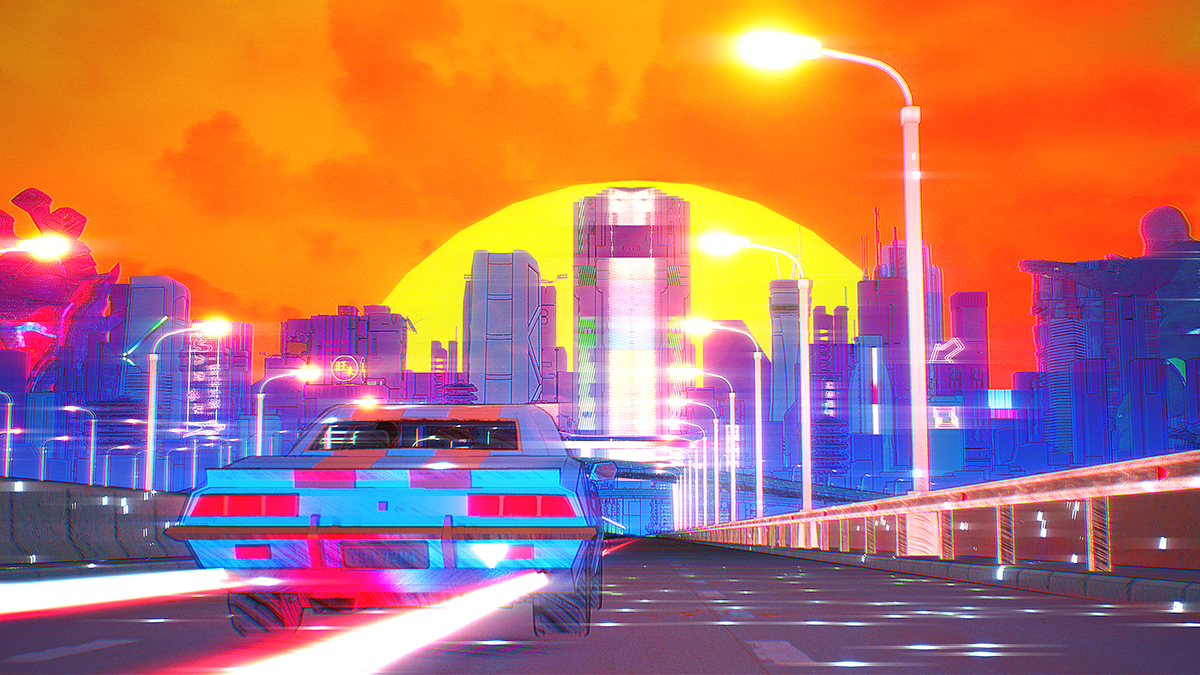
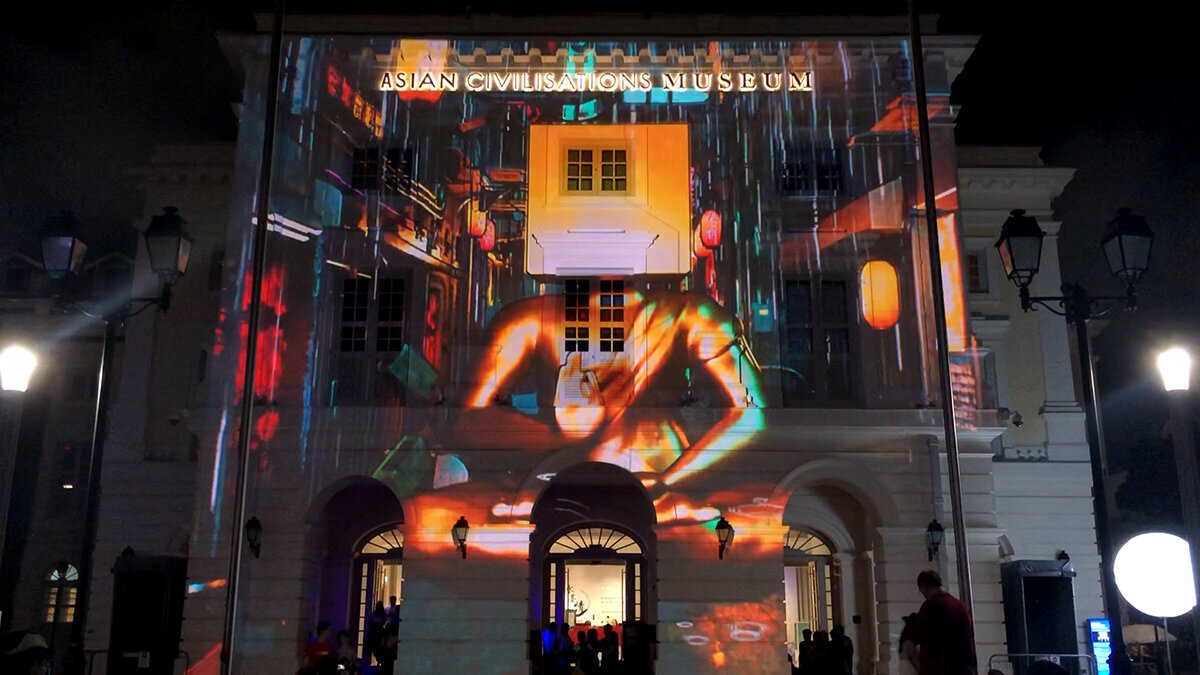
Their next inventive project involves a collaboration with UltraSuperNew Gallery – now at Tyrwhitt Road – called Liquid Singapore Designs, an exhibition that bridges the physical and virtual realms in the space of art-making. There will be a display of 40 artworks created from the cauldrons of their creativity: the eponymous series inspired by patterns and colour of Singapore perceived at a “higher dimensional scale”; a motley crew of 3D-printed animistic figurines called NamelessOnes; and a futuristic, sci-fi-inspired set of digital prints titled Imago. Indeed, it all does sound like a confounding head trip, an approach that wouldn’t be incongruent with the shock-worthy shenanigans of Metamo Industries.
We attempt to decipher the peculiar antics of the Metamo crew, as they share more about their necessary assembly, how music plays a part in the process, and what you can expect from Liquid Singapore Designs.
“The Protocol” by humanoise (Credit: Courtesy of Metamo Industries)
First up, what would you say sets you apart from other creative entities out there?
We try to bring a very strong visual style to our work that is informed by our passion for science fiction and its various subgenres, anime and otaku culture, etc. We are big nerds/geeks and proud of it and hope that shows in our work.
The visual identity of your portfolio is generally loud, frenetic and cheekily over-the-top. Is there an underlying philosophy that drives the works of Metamo Industries?
We like to think that we coined the term “Psyberpunk'' to describe our aesthetic. A merging of the mystical and spiritual realms with the technological world. It’s a niche part of the creative visual spectrum that doesn’t feel too rinsed out yet and gives us a lot of territory for us to stake our claim.
“Zen Premium 3.0.1” by SuperCyberTown (Credit: Courtesy of Metamo Industries)
There’s a tight-knit relationship between the rise of technology and the execution of your projects. How would you say the upward climb of technological advancements has affected or facilitated your creative vision?
We pride ourselves in living and working at the cutting edge of technological development. Being in this space means getting to work with tools where the rules have not been written yet and that experimentation is the name of the game. The futuristic world that we envisioned as kids is quickly becoming reality and we want to do our part to help shape what it looks and feels like. Art and technology are coherent with each other. A ‘brush’ is a technology meant to ‘paint’ something. If there is a new technology, or digital technology like VR and 3D printing, the form of art should evolve accordingly.
How do you decide before taking on a project? What kind of clients would you look out for or reject?
We are always looking to collaborate with clients. Collaboration means that the client is coming to us for our creative input, interpretation, and vision. We aren’t in the business of slapping logos everywhere or just regurgitating branding. It’s pretty easy to tell what direction things will go before signing on so we have been fortunate in that regard and have been able to focus on projects that engage us.
Can you share what has been the most challenging project for the team so far?
The most challenging projects we deal with are the big corporate ones where it is clear that someone on the client side has decided that they finally get to play creative director for once. Of course, we will always do our best to accommodate their wishes, but there seems to be a tendency for these types to obsess about insignificant details in the project that have no impact on the final product, and end up throwing the entire process off with trivial requests for changes just to suit their personal desire to exert control. The final product always suffers in the end when corporate clients try to take design matters into their own hands rather than trusting us. These types of projects make you wonder why the client even bothers to engage outside vendors when it seems like they only want to hear their own voice.
“In The Name of P-S-Y-G-O-D” by humanoise (Credit: Courtesy of Metamo Industries)
Let’s talk about your new exhibition, Liquid Singapore Designs. How many years in the making was this idea, and what does it mean for the team on an artistic and personal level?
Liquid Singapore Designs is actually a fairly recent creation. Like any good artistic endeavour, it was the culmination of all of the work we had done previously mixed with a happy accident.
Race: I was experimenting with some new techniques in my tool of choice, Unreal Engine, and happened to discover these really enticing patterns that emerged out of the aether if you will. It’s a new level of creation for me where I don’t have to worry about how ‘finished’ an image is, and in turn, is something that is much more marketable and mass-produce-able. This new series and style is a departure from the narrative type of work I have always done and it’s a nice shift in thinking for me that is focused more on the image itself than the story behind it.
humanoise: I have been curating and producing art exhibits of my own. One of Metamo’s goals is to showcase the alternative culture of Singapore fusing digital technology and art. I thought it would be a great opportunity to have a physical art exhibit to show the thinkings of Metamo and what our ‘art’ is in the flesh.
“Joo Chiat Shophouse Series 1.0.1” by SuperCyberTown is part of the Liquid Singapore Designs series (Credit: Courtesy of Metamo Industries)
When creating the myriad works in this project, how does a piece start to come together? Is there a fixed flow and construction process for each one?
Race: The Liquid Singapore Designs images, in particular, were the result of a lot of experimentation in Unreal Engine. I think it is a testament to the capabilities of the software, which I have always described as a giant sandbox of unlimited potential. Unreal Engine is typically used for 3D visualisation and is known for its photorealism, and I’ve tried to push it into a different direction for image synthesis through a bit of programming and manipulation of various effects. These images are actually generated from photos of Singaporean architecture that I’ve taken during my exploration of the city.
“Born in EXtasy” by humanoise is a product of the Imago series (Credit: Courtesy of Metamo Industries)
humanoise: The Imago series features more tech-driven artworks. With the generous support of Mimaki Singapore, I could produce large-scale 2D-printed artworks. I feel so fortunate that Mimaki allowed me to operate their top-class quality printers so I could test and push the boundaries of digital print art. Some artworks in the Imago series is related to Cybertown Stories [a sci-fi/cyberpunk anthology previously formulated by Metamo Industries], such as the characterisation of Cybertown Stories’ core computing system, as well as others based on my personal visions.
Meet “Guri” by humanoise, one of the NamelessOnes (Credit: Courtesy of Metamo Industries)
And what about the 3D printed figurines, the NamelessOnes?
humanoise: NamelessOnes emerged when I was creating artworks that symbolised my “Digital G-O-D” exhibit in 2020. We needed something to symbolise our spirituality with art and technology. That’s how I came upon the ancient animistic spirits and materialised those with Mimaki’s full colour 3D printer (3DUJ-553). The human is a vessel of higher energy, giving directionality to that energy with our knowledge and experience by using traditional tools like painting brushes or digital tools like computer graphics software and 3D printing. That is art.
“TheNamelessOne” by humanoise (Credit: Courtesy of Metamo Industries)
In my idea, characters in contemporary Japanese subcultures like manga and anime are coming back with animistic beliefs and feelings rooted in ancient Japanese Jomon culture. We all had animistic feelings in our ancient time; the idea that everything in nature has energy or a spirit inside can be found anywhere in the world. So I’m not just talking about Japanese culture but the hidden layer of all humanity. That is the reason why Japanese characters, irrational and kawaii, are widely accepted in the world. NamelessOnes is a fusion of spiritual energy/ancient spirit and cutting-edge digital technology.
Now the NamelessOnes are interfering with Cybertown Stories’ AI subsystems, fusing all spiritual, material and virtual worlds.
(Credit: Courtesy of Metamo Industries)
Let’s rewind and talk about the team for a bit. How did the three of you decide to come together to form Metamo Industries in the first place?
Like any good meeting of minds, it was part happenstance and part necessity. We had some rumblings of the idea at the end of 2019 but weren’t sure when we would be able to put it together because, like everyone else, our lives were all in different places and headed in different directions at the time. Things obviously took a very drastic turn at the start of 2020 and forming a company became paramount out of necessity – we needed a way to keep Race and Taketo in Singapore and employed. Taketo got his EntrePass two days before he was supposed to return to Japan, and Race has since gotten his Permanent Residence, so all is good!
That’s fortunate! For Race and Benedict, how does your longstanding chemistry as partners of O$P$ affect the direction and dynamic of Metamo?
O$P$ has been going for 10 years now and is a fundamental part of who we are. The “Geylang Crunk” style informs everything we do. The alternate universe of O$P$ that we’ve been building for a decade provides a framework for us to set our stories in, our characters to inhabit, and for our concepts to emerge from. We treat METAMO as an entity within that universe.
“HDB BLK 135.0” by SuperCyberTown (Credit: Courtesy of Metamo Industries)
How much of an influence does music have in the conceptualisation of your works?
It’s impossible to separate the two. The visuals are always designed to a soundtrack, and the audio is always crafted to fit an aesthetic. Creating imagery is always more engaging when there is a beat to follow and is that much stronger for it. Our studio is actually a full-fledged recording studio, complete with monitors and enough gear to throw a rave. We wouldn’t be able to function any other way. We think being able to blast music, or even be creating soundscapes simultaneously gives us a unique advantage over your typical creative house.
And lastly, how has Metamo managed to stay afloat with the lashings of the pandemic?
We started Metamo in the midst of the Circuit Breaker period, which was obviously a tense time for everyone in Singapore and the world. It was a bit of a gamble given the circumstances but it also seemed like the universe was giving us a chance to re-evaluate where we were and what direction we were heading. We have actually been incredibly fortunate as the world moved to a much more virtual space and everyone suddenly needed content and experiences for remote consumption, which is what we specialise in. We haven’t had to look for work since we started and have been very blessed with the work that we have been able to collaborate on. Our goal through our first year was to establish ourselves as an entity while the world gets back on track, and we think that we’ve far exceeded what we thought was possible when we started. We have no complaints and feel like we are really just getting started!
“Lophophora” by humanoise (Credit: Courtesy of Metamo Industries)
UltraSuperNew x Metamo Industries presents Liquid Singapore Designs, 16-29 April 2021, 168 Tyrwhitt Road, Singapore 207572. There will be a live performance by O$P$ and a VR artwork showcase on 16 April. Click on this link to make your booking.
